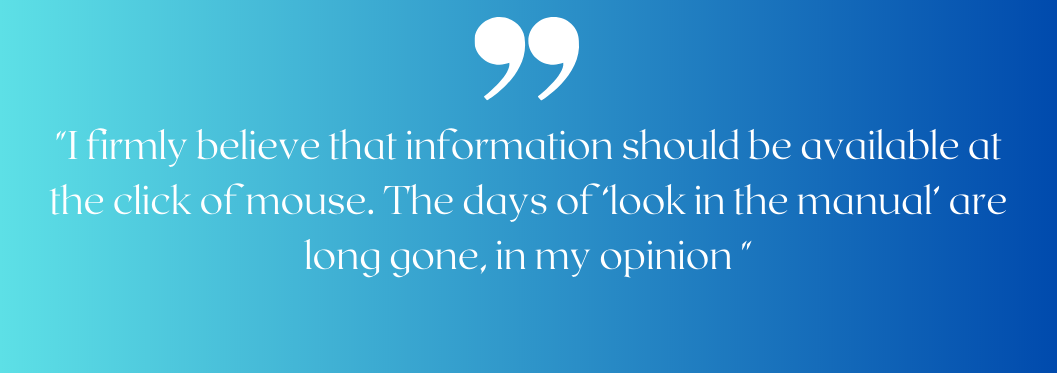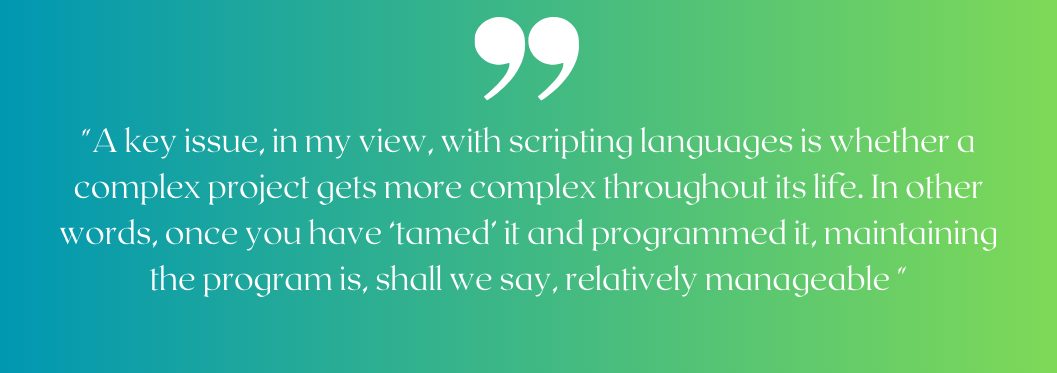
Phil Hearn: Blogger, Writer & Founder of MRDC Software Ltd.
Ruby vs Quantum vs Merlin vs Uncle – What matters in crosstab software?
Crosstabs, crosstabulations, tabulations, tables, survey analyses, call them what you will, are available in a vast number of software products. If you are looking for a top of the range crosstab software package to handle marketing or market research data though, there are few choices. So, what do I mean by top of the range crosstab software? It means one that has a scripting language so that:
- Difficult data structures and analyses can be handled
- Repetitive requirements are not tedious to process
- Expert users have tools to manipulate data and produce exactly what is required
- There are few limitations – hundreds of thousands of records, hundreds/thousands of tables etc.
Full disclosure
Let’s start by making my full disclosure.
- My company has an alternative to all these products called MRDCL. I know infinitely more about MRDCL than any of these programs. I have no doubt that all these products have some benefits over MRDCL, although I would argue that MRDCL has the most important benefits over all these products. I’ll come to these at the end.
- My comparison is mainly based on information in the public domain, although some information is based on personal experience.
- I have never used Ruby or Uncle, I used Quantum briefly when I was a young man (see my picture), but I have used Merlin albeit over 20 years ago.
What am I reviewing?
In this comparison, I am aiming to be as impartial as possible. I will be focusing on what I believe makes a good crosstab scripting software program for professional data processors. By necessity, I have had to avoid things that I can’t evaluate such as customer support – I’m not going to rely on one or two testimonials, I am afraid. Here are the areas that I am covering:
- What’s the website like for information?
- Does the software do “everything”?
- How easy is it to use?
- How easy are projects to manage?
- How active does the company appear to be from the website info?
- What does the software do beyond tabulations?
So, let’s get started.
What’s the website like for information?
This might seem like a strange place to start, but I firmly believe that information should be available at the click of mouse. The days of ‘look in the manual’ are long gone, in my opinion, so how do our four contenders stack up?
Red Centre Software, the developers of Ruby, wins easily here. On their website, there is a knowledgebase and over 50 training videos to guide you through topics ranging from the basic to the more complex. If there is a slight question mark, it would be that the videos seem to range from 2 minutes to 10 minutes in length and may not cover all the pitfalls and real problems a user may face in sufficient detail. But, providing 50+ training videos is good.
Merlinco’s product, Merlin, did not fare so well. One four-minute product portfolio video gives no more than a glimpse of Merlin. Aside from a feature list, a screenshot and a downloadable PDF which says what Merlin can do rather than how to do it, there is nothing to guide potential customers or users. The technical blog has recently offered examples of how to carry a few selected tasks, but no more than that. You are left with the feeling that Merlin probably does what I want, but I have no idea how.
Uncle Group that develops Uncle is worse. The website tells us how easy it is to use, but secrecy seems to be at the top of their priorities as there is no way to evaluate that. You are really in the dark as to what Uncle can and can’t do, although they reassure you that the “software allows for output with virtually no limitations to creating the exact report necessary”. I was briefly relieved to find a button which invited me to ‘Find Out More’, but, alas, don’t waste your time, it’s a dead end.
And, finally, we come to Quantum. There is no website for Quantum. There is one page telling you that it has been upgraded to run on Windows and to expect more updates, but there’s been no further news for over a year. There’s a very brief overview of what Quantum does on another page (and I mean brief) and that’s it. There is a lot of knowledge out there on forums as Quantum was the market leader for a long time. Unicom are now the proud owners of Quantum, but I get the feeling it hasn’t moved on since SPSS bought Quantum back in the late 1990s except, that is, for the fact it works under Windows. I get the feeling it’s rusting away.
Does the software do everything?
This is a tough one. Frankly, it’s impossible to judge, so I would rather share my thoughts here and, belatedly, perhaps, disclose another possible bias. But, firstly, let’s discuss what ‘Does the software do everything?’ mean? I am not expecting it to make the coffee! What I mean is much vaguer and even harder to be objective about. What I mean is ‘Does the software do more or less any tabulations you want with most data formats with reasonable efficiency?’ Yes, I know, that’s made it a rather vague statement, but let me try to apply that to each product.
I am going to declare Quantum and Merlin as the winners here – for different reasons. Quantum gets the accolade for its longevity. It hasn’t been developed seriously for around 20 years, but it still serves some people well. This is, I believe, testament to the fact that it must do ‘everything’. Merlin also scores well here. Now, this is mainly because I know. Merlin and MRDCL originated from the same program and went their separate ways in the early 1990s. Since that time, MRDCL has focused on productivity whereas Merlin seems to have focused on features, but it does mean that I am confident that Merlin does more or less everything you might need.
When it comes to Ruby, I have yet another opinion. Yes, anything is possible, but that is not the full story. It’s true that Ruby is packed with features. It’s different from the others in this comparison as most of tools are accessed through a GUI (graphical user interface). You can get into the muddier waters of a scripting language, but you are just programming using VB.net (Visual Basic) or some other programming language. Ruby’s user interface has a bewildering number of features, which would take some time to familiarise yourself with. In practice, the problem is that if the user interface runs out of steam and you want something more complex or something repetitive, you may need to find a VB programmer. If you don’t have a VB programmer in the house, this may be impractical and expensive. So, Ruby can claim that they can do anything, but it means going outside the software in practice and using someone who has different skills in most cases.
And, finally, Uncle. I have no idea. I, for one, am not prepared to believe their vague claim that they can do more or less anything without more evidence. Sorry, guys.
How easy is it to use?
Any program that uses a scripting language or has tons of features is never going to be easy to use. A program with tons of features can take some time to navigate and gain familiarity. A scripting language will always mean that there is a fairly steep learning curve, which will only be easier for someone who has already learnt a different scripting language or comes from a programming background. So, none of the products will score as ‘very easy’.
Quantum wins on one level here as I have regularly heard over the years that new users report that it is not too difficult to get started. However, it can be cumbersome at times and learning how to do more difficult requirements can take some learning. Still, I think it scores well here. Merlin, like MRDCL, is probably a bit harder to get started, but is a logical language where you can make decent progress once you have learnt the basics. Ruby, by contrast, is easy for the basics, albeit with an overwhelming number of options in places – there are so many buttons and selections you can make. As mentioned previously, if you have to resort to using Visual Basic, it really is a serious jump and you may not have the skills at hand. Uncle tells us it is easy to use. We will have to take their word for it.
How easy are projects to manage?
This is a deeper area that I feel is often neglected. I feel it is right to disclose here my potential bias as I think it is something that we have addressed well in our MRDCL software. A key issue, in my view, with scripting languages is whether a complex project gets more complex throughout its life. In other words, once you have ‘tamed’ it and programmed it, maintaining the program is, shall we say, relatively manageable. This problem manifests itself most when staff leave or are ill, when someone needs some help with a project to meet a deadline and with tracking studies or projects that are repeated in the future. The problem is that finding an error or modifying a script that has been prepared by someone else or has not been worked on seriously for, say, a year can lead to errors or an excessive amount of work to modify. For this reason, project management becomes important if the project is not a one-off project that is “in and out” of data processing in a fairly short period of time.
For this important aspect of software, Quantum wins. The script written in Quantum is structured and, therefore, easier to follow. Further, Quantum tends to have only one or two ways of doing things, which might make it inefficient or cumbersome at times, but means that the script is easier to interpret and manage. Merlin is a more flexible language, which can make it more difficult to manage for complex or longer-term projects, making it difficult for staff to share or take over a project. Ruby will suffer in the same way once Visual Basic or Jscript is used, arguably more so than Merlin as there will be even more ways to program requirements. Our friends at Uncle just don’t tell us, but I am going to assume that they don’t have good project management features.
How active does the company appear to be from the website info?
This is a no contest. Red Centre Software scores well with lots of info, examples and general activity. The only blemish is their blog which is sporadic and focused on product tips rather looking at the bigger picture. Merlinco scores poorly. Their news seems to be their most recent activity – a recent one announcing a new appointment and the previous one over a year ago announcing a software release. More recently, a separate technical blog has provided some helpful tips. Uncle Group’s have three news items – two for 2019 and before that in 2016. And, of course, Quantum has no news. This was an easy category for Ruby to win.
What does the software do beyond tabulations?
It’s hard to appoint a winner as each product has different solutions, so I’ll comment on each. Merlin offers a range of separate products for secondary analysis, online analysis and data editing. It’s hard to see where each product begins and ends, but from what I can ascertain, Merlin is the scripting part and there are add-ons for other things. Merlin also allows you to edit, clean and output data to most commonly needed formats.
Ruby has a lot in one box. It has an attractive looking charting engine which can deliver reports as well as tables. Again, there’s the worry of having to use Jscript or Visual Basic if the going gets tough, but there’s a lot in the box, including data editing. Quantum, by contrast, is Quantum. Quantum also has tools for editing and cleaning data. The editing and cleaning part of Quantum uses a separate language, but it is easy to learn, and although Merlinco, the developers of Merlin, feel that it’s a real disadvantage according to their website, I think it’s a non-issue. There are far more compelling reasons for not using Quantum. I have no idea if Quanvert still works, which was Quantime’s old secondary analysis software. With no website, it’s hard to find out. As for Uncle, you’ll need to click that Find Out More button – oh no, I forgot, don’t bother.
Overview
Pricing and support are two matters that are hard to evaluate without customer feedback or a viewable price list. Ruby offers support from Australia and Netherlands, while Merlinco offer support from the UK. Uncle are based near Los Angeles – whether anyone is at home is hard to guess. Quantum is not supported, but there a lot of people in the world that know Quantum well. I suspect they are scattered around USA, UK and India predominantly, but there are certain to be others around the world such was Quantum’s pervasiveness in the 1990s.
Comparing products
You might reasonably say that I have not compared these products on valid criteria. What if, for example, Uncle software is actually by far the most effective software of the products compared, but they just have a poor website? It might be a fair point, but I think software companies should not be exempt from working in a modern, professional way – and I can consider the website to be an important part of a company’s offerings (and, yes, ours is having a massive overhaul in the first half of 2020).
I am going to resist in this article comparing any of the products with MRDCL. I can see that Ruby has had a lot of development put into it. It has a lot of tools. If it does what you need with staff with the right skills, it is a good choice. To be fair, having staff with the right skills is applicable to all these products. Merlin has a very good foundation, but its development may have peaked as activity looks low in recent years. Uncle probably has some loyal users, but I can’t find out much about it, which is surprising in these internet days. Quantum, of course, is different in that it seems to be living in semi-retirement, yet it lives on in some way.
Learnings for MRDC Software
I promised not to compare any of these produc
ts with MRDCL, but I think there are some learnings, which I would like to share. I am glad that we invested in producing nearly 100 videos this year. It’s good for the future and already has made customers more comfortable. Who wants to pay for training nowadays when
a video can be watched whenever someone wants and can be re-watched where it is technical or difficult?
Resolve coming in 2020
Ruby has inspired us to move quickly forward with our new product, Resolve, which will be launched in the early part of 2020. Getting from tables to charts or even just producing charts rather than tables is becoming more and more important. This will be available from MRDC Software very soon. We also consider the need to get from data analysis to an online dashboard to be gaining increasing importance. Expect a big announcement from us early in 2020.
MRDC’s blog discusses wider issues
I am pleased that we discuss so many wider issues on our website through our blog. We have a wide following now and many people have thanked us for the knowledge and thoughts we have passed on. We aim to stay ahead in this area.
MRDC has big plans for 2020
The other thing that has inspired us all at MRDC Software is that there is a need to keep moving forward. We can see which software companies are moving ahead and which ones have stagnated. It’s as though some software companies (and I am not just talking about tabulation software suppliers) don’t want to look after their customers in the coming years. I know where we stand on that!
Tell me what you think
I’d welcome feedback on this article – from the software companies mentioned, users of the software and anyone else with an interest. I would be willing to publish any guest blog articles that are well presented. Also, if there are comments that anyone feels are unfair, I will gladly add them to this blog article or amend this article accordingly. Tell us what you think makes a good tabulation software package.
Contact me on phil.hearn@mrdcsoftware.com









